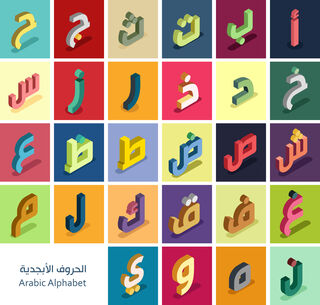Education
Why Does Writing by Hand Promote Better and Faster Learning?
Handwriting practice may improve literacy learning by engaging motor functions.
Posted July 9, 2021 Reviewed by Devon Frye
Key points
- Handwriting practice involves specific motor skills that are only engaged when writing by hand with a pen or pencil.
- A new "handwriting and literacy learning" study shows that writing-by-hand practice promotes faster learning than non-motor writing practice.
- The learning advantage gained by handwriting practice may be linked to the perceptual-motor experience of writing by hand.
- Cursive handwriting engages sensorimotor brain regions that are not activated by typewriting; this neural activity helps students learn better.

New research from Johns Hopkins University (JHU) suggests that handwriting practice refines fine-tuned motor skills and creates a perceptual-motor experience that appears to help adults learn generalized literacy-related skills "surprisingly faster and significantly better" than if they tried to learn the same material by typing on a keyboard or watching videos. These findings (Wiley & Rapp, 2021) were published on June 29 in the peer-reviewed journal Psychological Science.
For this study, Robert Wiley and Brenda Rapp conducted a two-phase experiment involving 42 non-Arabic-speaking adults randomly divided into three groups of learners: hand-writers, typers, and video watchers.
In the experiment's first phase, each participant was taught the Arabic alphabet (i.e., abjad), which has 28 letters, using motor and non-motor learning styles depending on their group.
After six learning sessions, everyone in the video watching and type-writing group had learned the Arabic alphabet and could identify each of its 28 letters. However, people in the handwriting group—who used pen and paper to write each letter during their learning sessions—gained the same level of proficiency after just two learning sessions.
During the second phase of this experiment, the researchers tested to what extent (if at all) participants in each group could "generalize" their new knowledge by using Arabic letters to spell new words or to read unfamiliar words with abjad lettering. The researchers found that the handwriting group was "decisively" better at this type of literacy-related generalization.
Why Does Writing by Hand Help Us Learn?
The 3 research questions addressed by Wiley and Rapp include:
- Are the benefits of handwriting practice due to motor learning per se or to other incidental factors?
- Do the benefits generalize to untrained tasks?
- Does handwriting practice lead to learning and strengthening only of motor representations or of other types of representations as well?
"Our results clearly show that handwriting compared with nonmotor practice produces faster learning and greater generalization to untrained tasks than previously reported," the co-authors explain. "Furthermore, only handwriting practice leads to learning of both motor and amodal symbolic letter representations."

How Does Handwriting Help When Learning to Read?
When learning to read, why does writing an alphabet's letters by hand work best? Handwriting creates a perceptual-motor experience, the authors posit.
"The simple act of writing by hand provides a perceptual-motor experience that unifies what is being learned about the letters (their shapes, their sounds, and their motor plans), which in turn creates richer knowledge and fuller, true learning," the researchers said in a July 7 news release.
Although the participants in this study were all adults, Wiley and Rapp speculate that the same results would be seen in children. When learning an alphabet for the first time, this research suggests that writing the letters by hand optimizes literacy learning. This research also has implications for K-12 classrooms, where literacy learning is increasingly dependent on computer tablets and laptops. These digital devices fail to create a perceptual-motor experience, which may impede learning.
"The question out there for parents and educators is why should our kids spend any time doing handwriting," Rapp, a professor of cognitive science at Johns Hopkins University, said in the news release. "Obviously, you're going to be a better hand-writer if you practice it. But since people are handwriting less, then maybe who cares? The real question is: Are there other benefits to handwriting that have to do with reading and spelling and understanding? We find there most definitely are."
"With writing, you're getting a stronger representation in your mind that lets you scaffold toward these other types of tasks that don't in any way involve handwriting," Wiley, a former JHU doctoral student who is currently a professor at the University of North Carolina, added.

Writing or Drawing by Hand Triggers Robust Neural Activity in the Brain's Sensorimotor Regions
The latest JHU handwriting research builds on the findings of a Norwegian University of Science and Technology study (Askvik, Van der Weel, & Van der Meer, 2020) from last year, which found that 12-year-old children and young adults learn more efficiently and remember new knowledge better when writing by hand instead of using a keyboard. This high-density EEG study tracked and recorded brain wave activity during classroom learning. The researchers identified neuroscience-based ways that cursive handwriting was superior to typewriting when learning in the classroom and why learning cursive is good for our brains.
"The use of pen and paper gives the brain more 'hooks' to hang your memories on. Writing by hand creates much more activity in the sensorimotor parts of the brain," senior author Audrey van der Meer said in an October 2020 news release. "A lot of senses are activated by pressing the pen on paper, seeing the letters you write, and hearing the sound you make while writing. These sensory experiences create contact between different parts of the brain and open the brain up for learning. We both learn better and remember better."
In their paper's abstract, the NTNU authors sum up their findings on the importance of cursive handwriting over typewriting for learning in the classroom: "We conclude that because of the benefits of sensory-motor integration due to the larger involvement of the senses as well as fine and precisely controlled hand movements when writing by hand and when drawing, it is vital to maintain both activities in a learning environment to facilitate and optimize learning."
References
Robert W. Wiley and Brenda Rapp. "The Effects of Handwriting Experience on Literacy Learning." Psychological Science (First published: June 29, 2021) DOI: 10.1177/0956797621993111
Eva Ose Askvik, F. R. (Ruud) van der Weel and Audrey L. H. van der Meer. "The Importance of Cursive Handwriting Over Typewriting for Learning in the Classroom: A High-Density EEG Study of 12-Year-Old Children and Young Adults." Frontiers in Psychology (First published: July 28, 2020) DOI: 10.3389/fpsyg.2020.01810




